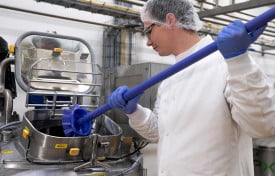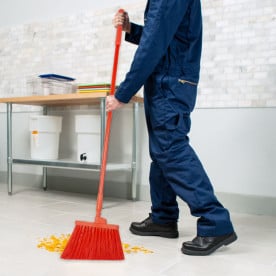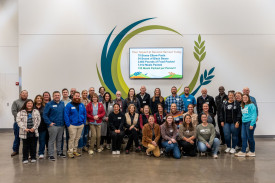Laboratory & QA/QC

- November 26, 2012
Do you know that for the fourth quarter of 2011 allergens exceeded microbiological causes for recalls? If you Google "FDA Allergen Recalls" you might be amazed at all the recalls by the FDA just within the last few months. They ranged from undeclared milk and soy in jams and jellies to sea salt that possibly contained milk residue - the list goes on and on. It is important for food plants to ensure that each and every time they go from one production run to another that the food contact surfaces are allergen-free.
Food production facilities must ensure that their ingredient suppliers are also declaring specific allergens in their products and testing for them. Certificates of analysis for each lot must identify
- November 20, 2012
From August through November, “The Wide Line” blog will feature a series of columns authored by Dan Strongin, a well-known name in the food industry.
- November 07, 2012
From school labs to medical labs to QA/QC labs in places like the food industry, eye protection is a safety concern that receives a lot of attention. Rightly so, as every day in the United States, about 2000 workers are treated medically for an eye injury. In addition, eye injuries "alone cost more than $300 million per year in lost production time, medical expenses, and worker compensation." The proper use of goggles and safety glasses can make a significant difference in lowering these numbers.
One can browse through countless policy manuals for schools, government agencies, and some industrial settings, where eye protection is mandated. With such universal attention paid to eye safety, why do the numbers of injuries and costs remain so high? The answer isn't a simple one, but some factors can include the following: compliance and standards issues, user error, or simply put: momentary indifference.
Compliance and standards issues involve many possibly enabling factors for eye injuries in the lab. A lack of employee training can factor in, as can a lack of knowledge of federal and state standards. For instance, an employee may not understand that their daily glasses do not provide sufficient protection. Contact users and glasses-wearers need to have additional eye protection, such as goggles that fit around the glasses, or have their prescription incorporated into an ANSI Z87.1 compliant design. These issues may seem quite obvious to some operations, but these causes for concern continue to occur in the lab. To learn more or to refresh your knowledge on eye protection in the workplace click here.
In terms of accidents in the lab, user error is another factor that can come into play. Employees need to ensure that their eye protection is Z87 compliant. Further, they need to know what kinds of hazards exist, and to select the proper eyewear for those hazards. Finally, the eyewear must be properly fitted. For some helpful information on hazards and choosing the proper eyewear for the job, click here.
- November 17, 2011
The Food Modernization Act (FSMA) has been a continued and focused project for the FDA throughout 2011. The FDA is actively working on shaping and implementing the
- November 10, 2011
One of the most interesting stories from the lab department occurred about 12 months ago and continues to unfold. We received a call from the father of Chad Campbell, a very
- October 13, 2011
What is WLA? Wisconsin Laboratory Association. I had heard of this organization for years, but not until I became a member did I realize the important benefits it
- July 26, 2011
Here's a sneak peek of our exhibit at the International Association for Food Protection (IAFP) Annual Meeting, at the Frontier Airlines Center in Milwaukee, Wisconsin, next week, July 31-August 2.
Our booth 621 will feature:
- Our new website, we will have a laptop right in the booth, stop by and check it out!
- Color-coded products, many new items are now available in purple.
- Sanitation & environmental testing supplies, see our allergen test kits &
- June 02, 2011
You have just finished cleaning all your food contact surfaces and now it is time to start up your production. How do you validate the fact that your cleaning is indeed







